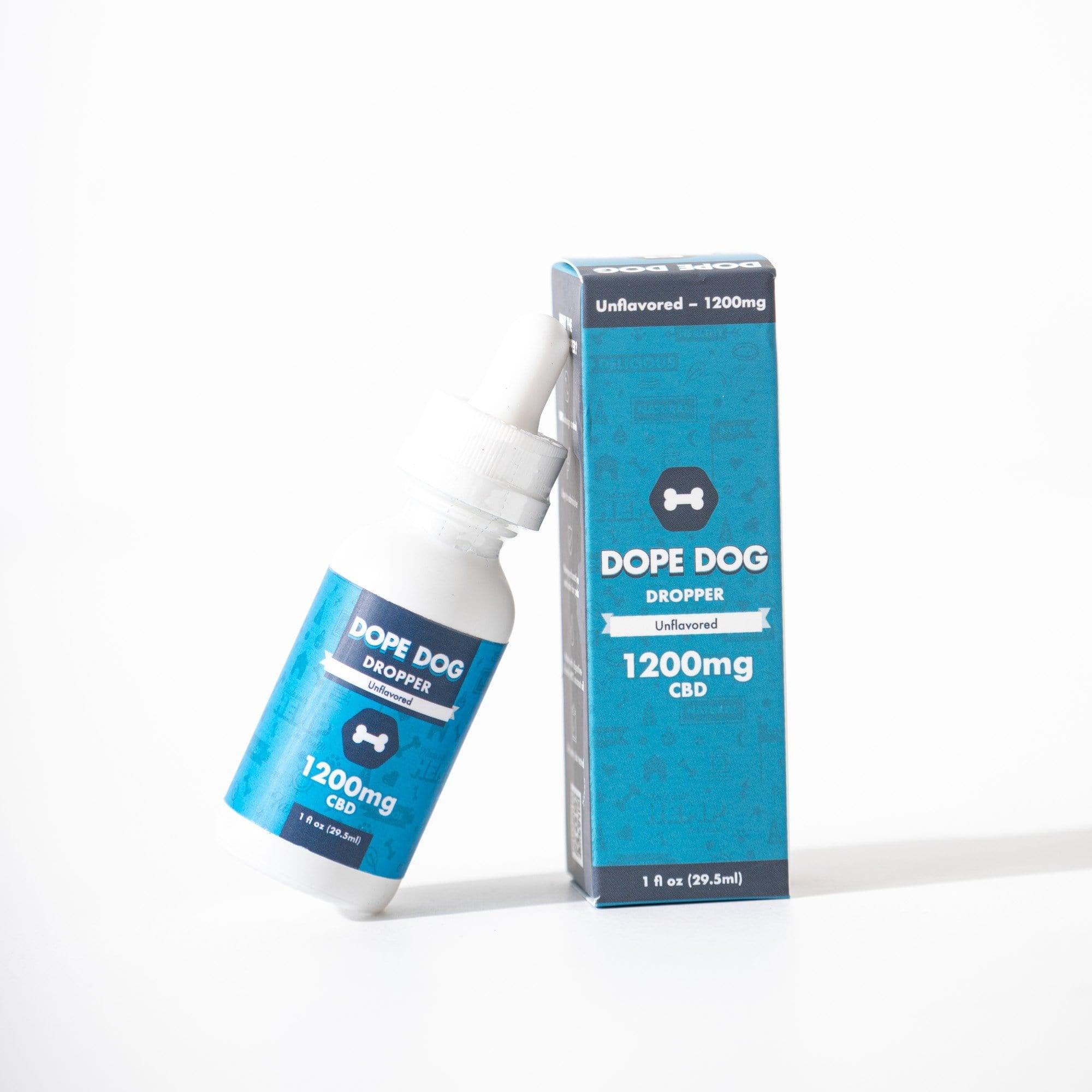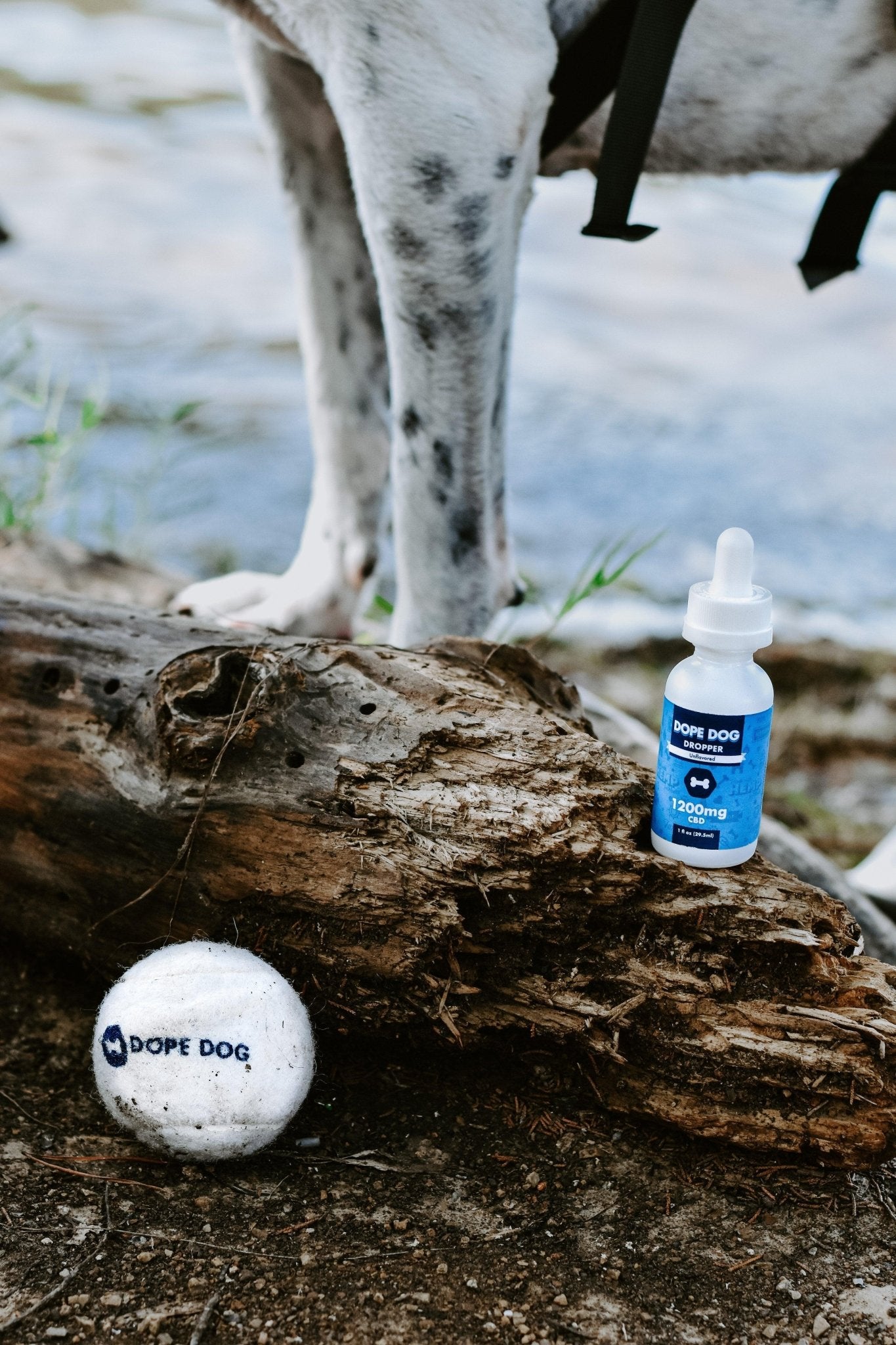Welcome to our comprehensive blog post series, "Ear Infections in Dogs: Unveiling the Silent Threat to Your Canine Companion's Health." As responsible pet owners, our primary focus is often on keeping our dogs both happy and healthy. However, one area that commonly flies under the radar is ear health. From the symptoms of ear infections in dogs to the risks of untreated ear infections, this post will delve into everything you need to know.
In our first section, we'll lay down the basics: what exactly are ear infections and why should you care? Understanding this is crucial for early detection and treatment, which can prevent complications like a dog ear infection spread to brain, and make life much more comfortable for your four-legged friend.
We'll also dive into common causes and risk factors contributing to ear infections, whether it be yeast vs bacterial origins, allergies, ear mites, or frequent water exposure. Recognizing these factors is the first step in understanding how to treat ear infections in dogs and taking preventive measures, sometimes even without a vet.
What's more, did you know that certain breeds are more prone to ear infections due to the anatomy of their ears or genetic predispositions? In this guide, we'll discuss the prevalence of ear infections across various dog breeds and ages. This will allow us to be proactive in our approach to both preventing and managing these pesky problems.
The far-reaching impact of ear infections on your dog's health shouldn't be underestimated. From hearing loss and balance issues to chronic pain, and even behavioral changes, these infections can severely degrade your dog's quality of life. Learning how to spot the signs and symptoms of ear infections in dogs is vital. This way, you can promptly initiate the appropriate treatment for ear infections, possibly averting more serious health risks.
Related: CBD for itchy dogs

So whether you're wondering about vet-recommended treatments, or searching for tips on how to treat a dog ear infection without a vet, stay tuned. This guide aims to equip you with the knowledge you need to effectively manage your dog's ear health.
In the following sections of this blog post series, we will delve deeper into the topic. We will explore the canine ear anatomy, understanding its different parts and their functions in maintaining ear health. We will also discuss how the anatomy of a dog's ear can contribute to the development of infections.
Related Link: Tips on How To Stop Dogs from Barking
Additionally, we will provide guidance on recognizing the symptoms of ear infections in dogs. Whether it's visual cues like redness, swelling, or discharge, or behavioral cues like head shaking and scratching, being able to identify these signs will enable us to seek timely veterinary care.
Diagnosis and treatment of ear infections will be another crucial aspect we will cover. We will emphasize the importance of seeking veterinary care for proper diagnosis and discuss various diagnostic procedures that veterinarians may employ. We will also explore different types of ear infections, including bacterial, yeast, and fungal, and the corresponding treatment options.
To ensure the long-term well-being of our furry friends, we will provide tips on preventing ear infections in dogs. Regular ear cleaning and maintenance routines, proper grooming practices, and managing underlying conditions will all play a role in keeping their ears healthy and infection-free.
In conclusion, this blog post series aims to shed light on the often overlooked issue of ear infections in dogs. By understanding the causes, symptoms, and preventive measures, we can take proactive steps to safeguard our canine companions' health. We encourage you to read on and share your own experiences or ask further questions in the comments section.
Let's prioritize our dogs' ear health together!
Related: Ear Infections in Dogs

Understanding Canine Ear Anatomy
The canine ear is an intricate and fascinating structure that plays a crucial role in a dog's overall sensory experience. To understand dog ear infections fully, you need to grasp the canine ear anatomy thoroughly. In this section, we'll delve into parts and functions of a dog's ear to explain how it can contribute to infections.
The canine ear can be divided into three main sections: the outer ear, middle ear, and inner ear. Each section serves a unique purpose in maintaining a dog's hearing ability and overall ear health.
Starting with the outer ear, the most visible part is the pinna, commonly known as the earflap. The pinna serves as a protective cover for the more delicate structures deeper inside the ear. The shape and size of a dog's ears can vary widely among breeds, from erect to droopy or floppy ears. The pinna also helps to direct sound waves into the ear canal, enhancing a dog's ability to hear.
Moving into the middle ear, we encounter the ear canal, also referred to as the external auditory canal. This narrow tube connects the pinna to the eardrum, also known as the tympanic membrane. The ear canal's specialized skin produces earwax, trapping debris, dirt, and pathogens to protect the middle and inner ear. The canal's shape and length differ among breeds; some have long, narrow canals, while others have short, wide ones.
The eardrum, located at the end of the ear canal, marks the boundary between the outer and middle ear. This thin, translucent membrane vibrates in response to sound waves, transmitting them to the middle ear. The eardrum's vibrations move to the middle ear ossicles—three tiny bones known as the malleus, incus, and stapes. These bones amplify the sound waves and pass them on to the inner ear.

Related: Dog Probiotics 101
The inner ear, also known as the labyrinth, is the most intricate part of the canine ear. The inner ear includes the cochlea, vestibule, and semicircular canals, crucial for a dog's hearing and balance. The cochlea is responsible for converting sound vibrations into electrical signals that are sent to the brain for interpretation. The vestibule and semicircular canals are crucial for maintaining a dog's balance and spatial orientation.
Understanding the anatomy of a dog's ear is essential in comprehending how ear infections can develop. The structure of the ear, including the shape of the pinna and ear canal, can influence airflow and moisture levels within the ear, making some dogs more prone to infections than others. Excessive hair or tight ear canals can also promote bacterial, yeast, or fungal growth, raising the infection risk.
In the next section, we'll cover the common signs and symptoms of ear infections in dogs to help you identify when your pet may be in discomfort.
Related Link: 6 Facts Your Vet Wished You Knew About Keeping Your Dog Healthy
Recognizing Symptoms of Ear Infections in Dogs
Ear infections in dogs can be uncomfortable and painful for our furry friends. As responsible pet owners, recognizing the signs and symptoms of ear infections is crucial for timely treatment and relief for our canine companions. In this section, we will explore the common indicators that may suggest your dog is suffering from an ear infection.
One of the most noticeable signs of an ear infection is excessive scratching or rubbing of the ears. If your dog frequently paws at their ears or rubs their head against the floor. This could indicate discomfort or itchiness from an infection. Dogs might also tilt their head to one side or shake their heads vigorously to try and ease the discomfort.
Another visible cue of an ear infection is redness of the ear canal or the skin around the ear. The infected area may appear inflamed, tender to the touch, and warm.

Want a natural option for managing your dog’s bee sting? Shop Dope Dog CBD oils and treats.
Additionally, you may notice a foul odor emanating from your dog's ear. This odor is often described as musty or yeasty and is caused by the presence of bacteria or yeast overgrowth.
Ear infections can also lead to the production of abnormal discharge. Discharge color and consistency can differ based on the infection type, from yellowish pus to dark brown or black wax. While some earwax is normal, excessive or foul-smelling discharge should raise concerns.
Changes in behavior can also be indicative of an ear infection. Dogs in pain or discomfort may exhibit behavioral changes such as irritability, restlessness, or aggression. Dogs may become touch-sensitive, especially around the head and ears, and might resist having their ears touched or examined.
In some cases, ear infections can cause secondary symptoms that extend beyond the ear itself. For example, dogs with severe ear infections may experience hearing loss or balance issues. They may have difficulty maintaining their balance or may walk in circles. These symptoms are a result of the infection affecting the inner ear, which plays a crucial role in a dog's equilibrium.
Love your pup every day the easy way with Dope Dog. Check out their full line of pet-safe CBD products today. Shop now!
It is important to note that the signs and symptoms of ear infections can vary depending on the severity and type of infection. Some dogs may exhibit all of the mentioned signs, while others may only show a few. Some breeds with long, floppy ears or dogs with existing health issues may be more susceptible to chronic or recurring ear infections.
Recognizing the symptoms of ear infections in dogs is the first step in seeking appropriate veterinary care. If you observe any of these signs in your furry friend, it is crucial to consult with your veterinarian for a proper diagnosis and treatment plan.
In the next section, we will discuss the diagnosis and treatment options available for ear infections in dogs, providing you with valuable information to help your canine companion find relief and regain ear health.
Dope Dog offers premium top-quality CBD made for dogs.
Diagnosis and Treatment of Ear Infections in Dogs
For effective treatment and relief of ear infections in dogs, early and precise diagnosis is essential. In this section, we'll look at the vet-recommended diagnostic methods for identifying dog ear infections and examine the range of treatment options.

The first step in diagnosing an ear infection in dogs is a thorough physical examination. Your veterinarian will carefully inspect your dog's ears, looking for signs of redness, swelling, discharge, or odor. They may also palpate the area to check for tenderness or pain. During this examination, it is important to inform your veterinarian about any observed behavioral changes or symptoms your dog has been experiencing.
Otoscopy is another common diagnostic procedure used to examine the ear canal and eardrum. A specialized instrument called an otoscope is used to visualize the ear canal and identify any abnormalities. This allows the veterinarian to assess the condition of the ear, check for blockages, and determine the extent of the infection. In some cases, sedation or anesthesia may be necessary, especially if the dog is experiencing significant pain or discomfort.
Related: Measure Dog Food Portions

To confirm the presence of an infection and identify the specific pathogens responsible, veterinarians often perform cytology. This involves taking a sample of the ear discharge or debris and examining it under a microscope. By analyzing the sample, the veterinarian can determine whether the infection is caused by bacteria, yeast, fungi, or a combination thereof. This information is crucial in determining the appropriate course of treatment.
Once the ear infection has been diagnosed, the veterinarian will develop a treatment plan tailored to your dog's specific needs. The treatment approach will depend on the type and severity of the infection. Bacterial infections are typically treated with antibiotics, either in oral or topical form. It is important to follow the prescribed dosage and duration of the medication to ensure complete eradication of the infection.
Yeast infections, on the other hand, require antifungal treatment. Topical antifungal medications, such as drops or ointments, are commonly prescribed to combat yeast overgrowth in the ears. In some cases, oral antifungal medications may be necessary if the infection is severe or recurrent.
In more severe or chronic cases, additional treatment may be required. This may involve flushing the ear canal to remove debris and excess discharge, providing pain relief medication, or implementing a specialized ear cleaning routine. Your veterinarian will guide you through these additional measures based on your dog's specific condition and needs.
Related: MSM For Dogs

It is important to note that treatment alone is not enough to eliminate ear infections in dogs. Preventive measures and ongoing management are crucial to avoid recurrence. Your veterinarian will provide guidance on proper ear cleaning techniques, frequency, and products to use. They may also recommend dietary adjustments, especially if allergies are contributing to the ear infections.
In conclusion, a timely and accurate diagnosis, followed by appropriate treatment, is essential in managing ear infections in dogs. By working closely with your veterinarian, you can ensure that your furry companion receives the care and relief they need. In the next section, we will delve into preventive measures that can help minimize the risk of ear infections in dogs, allowing them to enjoy optimal ear health and overall well-being.
Related: CBD Oil for Dogs With Cancer: Everything You Need to Know
Preventing Ear Infections in Dogs
As the saying goes, "Prevention is better than cure." This holds true for ear infections in dogs as well. Taking proactive measures to prevent ear infections can significantly contribute to your canine companion's ear health and overall well-being. In this section, we will discuss various preventive measures that can help minimize the risk of ear infections in dogs.
Regular ear cleaning and maintenance routines are vital in preventing the buildup of debris, wax, and moisture that can contribute to the development of ear infections. It is important to follow proper ear cleaning techniques and use veterinarian-approved cleaning solutions. Your veterinarian can guide you on the appropriate frequency of ear cleaning based on your dog's breed, lifestyle, and susceptibility to ear infections.
When cleaning your dog's ears, be gentle and avoid using cotton swabs or other sharp objects that can potentially damage the delicate structures of the ear. Instead, use a soft, clean cloth or a cotton ball to wipe away debris from the outer ear. Be sure to reach the folds and crevices of the ear, where bacteria and yeast can thrive.
Maintaining good grooming practices can also contribute to preventing ear infections.
Regular grooming sessions can help keep your dog's coat clean and free from excessive dirt or allergens that may find their way into the ears. Trimming excess hair around the ears, particularly in breeds with long, floppy ears, can promote better air circulation and reduce the risk of moisture buildup.
Managing underlying conditions that may contribute to ear infections is crucial. Allergies, for example, can make a dog more prone to ear infections. Identifying and managing allergy triggers, such as certain foods, environmental allergens, or flea infestations, can help reduce the risk of ear infections. Your veterinarian may recommend allergy testing or dietary adjustments to address these underlying conditions.
Preventive measures should extend beyond regular cleaning and grooming. It is important to be mindful of activities that expose your dog's ears to excessive moisture, such as swimming or bathing. After these activities, make sure to thoroughly dry your dog's ears, using a clean towel or a gentle dryer on a low setting. Moisture trapped in the ears can create an ideal environment for bacteria, yeast, or fungi to flourish.
Are you looking for a worry-free way to safely dose your dog? Dope Dog has treats that make it easier than ever to offer your CBD. Shop today!
Regular veterinary check-ups are essential for monitoring your dog's ear health and addressing any potential issues early on. During routine examinations, your veterinarian can assess the condition of your dog's ears, identify any underlying problems, and provide guidance on preventive measures specific to your dog's needs.
In conclusion, preventing ear infections in dogs requires a proactive approach that includes regular ear cleaning, proper grooming practices, managing underlying conditions, and being mindful of activities that expose the ears to excessive moisture. By incorporating these preventive measures into your dog's routine, you can help minimize the risk of ear infections and promote optimal ear health.
In the final section of this blog post series, we will recap the key points discussed and emphasize the importance of prioritizing ear health in our canine companions.

Related: Zyrtec for Dogs
Conclusion: Prioritizing Ear Health in Dogs
Throughout this blog post series, we have explored the world of ear infections in dogs. From understanding the anatomy of a dog's ear to recognizing the symptoms, diagnosing, and treating ear infections, we have gained valuable insights into this common and often overlooked health issue. We have also explored preventive measures that can help minimize the risk of ear infections in our furry companions.
Ear infections can be uncomfortable, painful, and potentially lead to more serious health complications if left untreated. As responsible pet owners, it is our duty to prioritize our dogs' ear health and take proactive steps to prevent and manage ear infections.
Regular ear cleaning and maintenance routines, as well as proper grooming practices, play a crucial role in preventing the buildup of debris, wax, and moisture that can contribute to ear infections. By following veterinarian-approved cleaning techniques and solutions, we can help maintain optimal ear hygiene.
Managing underlying conditions, such as allergies, can also help reduce the risk of ear infections. Identifying and addressing allergy triggers, along with regular veterinary check-ups, can contribute to overall ear health.
Through proper diagnosis and treatment, we can provide relief and alleviate discomfort for our dogs. Seeking veterinary care at the first sign of an ear infection is essential. This allows for a comprehensive examination, accurate diagnosis, and appropriate treatment tailored to your dog's specific needs.
Related: CBD For Itchy Dogs
Prevention is truly better than cure when it comes to ear infections in dogs. By being proactive and implementing preventive measures, we can minimize the risk of ear infections and promote optimal ear health for our beloved canine companions. Regular cleaning, proper grooming, and being mindful of activities that expose the ears to excessive moisture are all important steps in this regard.
In conclusion, let us prioritize our dogs' ear health and be vigilant in recognizing the signs of ear infections. By taking steps to prevent, diagnose, and treat ear infections, we can ensure that our furry friends lead happy, healthy, and comfortable lives.
Thank you for joining us on this journey through the world of ear infections in dogs. We hope that the information provided in this blog post series has been insightful and beneficial to you and your canine companions. If you have any further questions or experiences to share, we encourage you to leave a comment below. Together, let's keep our dogs' ears healthy and infection-free


![Why is My Dog's Ear Swollen? [MUST KNOW!]](http://dope.dog/cdn/shop/articles/tim-higham-QxDXORRktWE-unsplash-555717.jpg?v=1697236049&width=1536)















